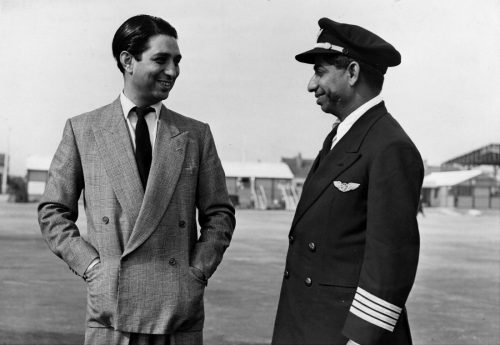One of India’s most recognisable and loved mascots, Air India’s portly Maharajah with folded hands has held a special place in the hearts of its citizens for years.
“We can call him the Maharajah for want of a better description. But his blood isn’t blue. He may look like royalty, but he isn’t royal. He is capable of entertaining the Queen of England and splitting a beer with her butler. He is a man of many parts: lover boy, sumo wrestler, pavement artist, vendor of naughty post cards, Capuchin monk, Arab merchant…”
These are the words of Bobby Kooka, the man who conceived Air India’s Maharajah nearly 72 years ago. One of India’s most recognisable and loved mascots, this portly figure in regal garb has held a special place in the hearts of its citizens for years.
Here’s the fascinating story of Air India’s iconic Maharajah.
A part of Air India’s campaign to distinguish itself from its peers, the jovial and rotund Maharajah first made his appearance on an in-flight memo pad in the mid-1940s. He was conceived by SK (Bobby) Kooka, who was then a Commercial Director with Air India and sketched by Umesh Rao, an artist at J Walter Thompson in Bombay.
Back then, India was known as the “Land of the Maharajas” and Air India was its only international carrier, flying to destinations such as Cairo, Prague, Damascus, Zurich and Istanbul. So Kooka wanted to create an illustration for Air India’s letterhead that would symbolise graciousness and elegant living.
For the next few years, the Maharajah was ingeniously used by India’s national airline to introduce new flight routes. His funny antics and quirky puns also allowed Air India to promote its services with subtle humour and unmatched panache.
For instance, one of the posters from Air India’s “retro collection” shows the Maharajah as a Russian Kalinka dancer to advertise its flight to Moscow. Another one shows him on a speedboat surfing in Australia with the boat replaced by two mermaids. Yet another one shows him being carried as a prey, hands and feet tied, by two lions in the jungles of Nairobi.
Here are some iconic posters that show the Maharajah in his quirky avatars, looking quite at home in famous locations around the world.
 Photo Source: Air India on Imgur.
Photo Source: Air India on Imgur.
Unsurprisingly, the Maharajah has won numerous national and international awards for Air India for originality in advertising and publicity.
Interestingly, at one point in time, the mascot’s regal connotations triggered a controversy with politicians expressing doubts about using such a symbol to represent a nation with socialist aspirations. As a result, Air India did away with the Maharajah in 1989. But there was such a hue and cry from various quarters that the popular mascot had to be brought back.
In fact, during these years, Maharajah stickers and dolls were common in most middle-class Indian homes, even those where air travel was considered a luxury!
So like all great men, the Maharajah has had his critics. But the millions of travellers who love him far outnumber them. For many of them, the inimitable mascot is a real person, almost like a friend who reaches out with warmth and hospitality, even to the farthest corners of the world.
As Rahul Da Cunha, the ad man behind the equally iconic Amul India campaign, once said,
“The Amul girl and the Air India Maharaja are the most brilliant characters ever created. The Maharaja encapsulates everything Air India should be: Indian luxury, hospitality, services and above all, royalty. It is royalty combined with humility. What can be a more iconic symbol for an Indian carrier?”
Source….SanchariPal
http://www.the better india.com
Natarajan





